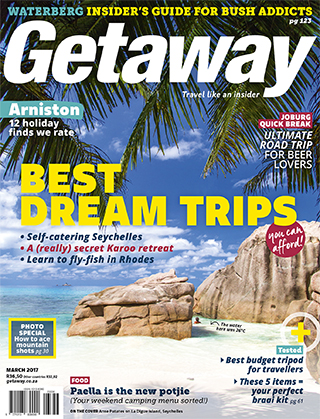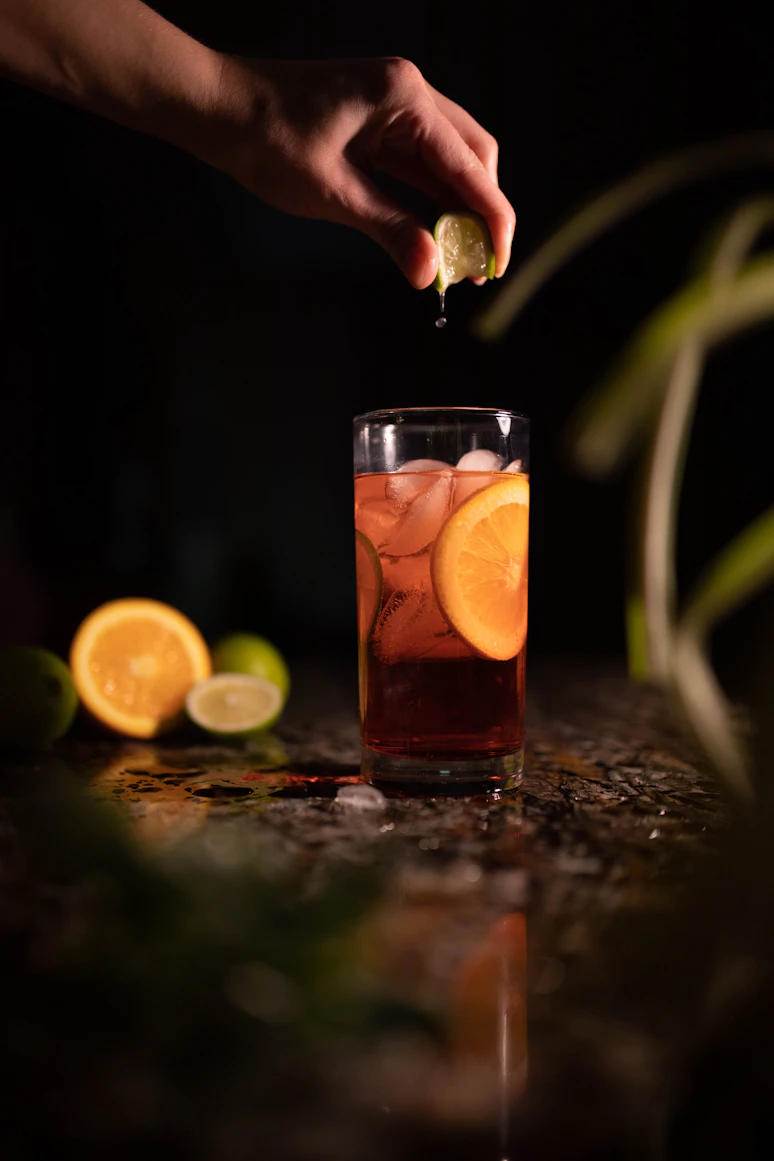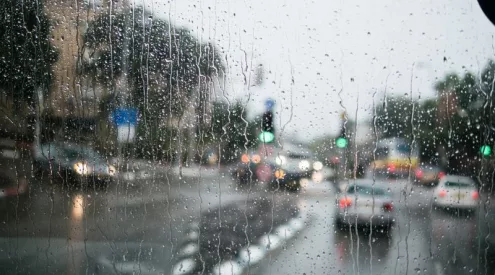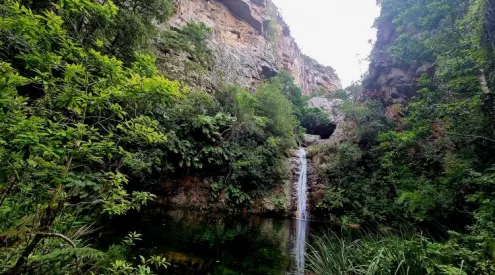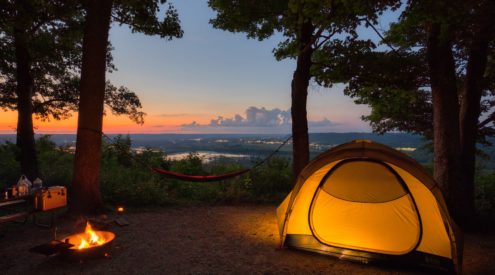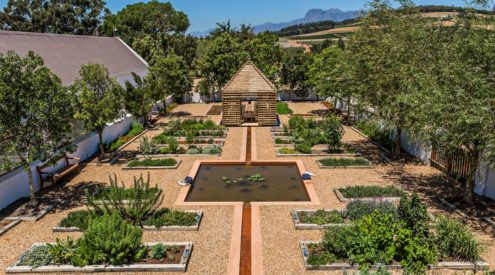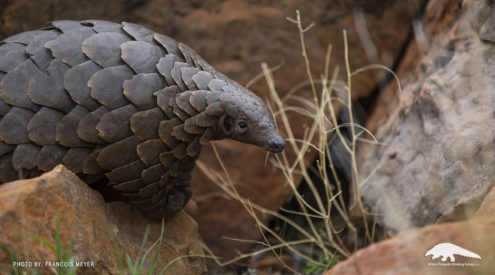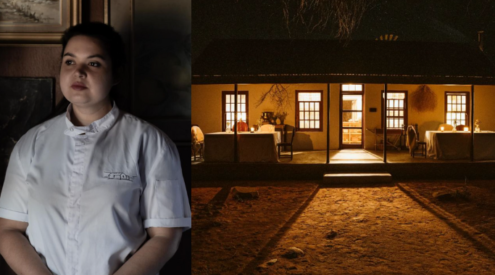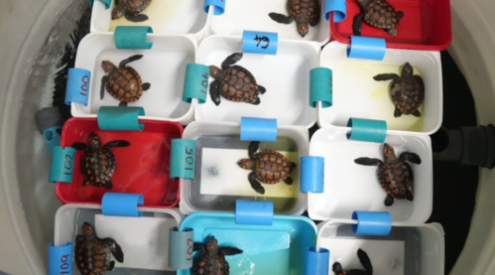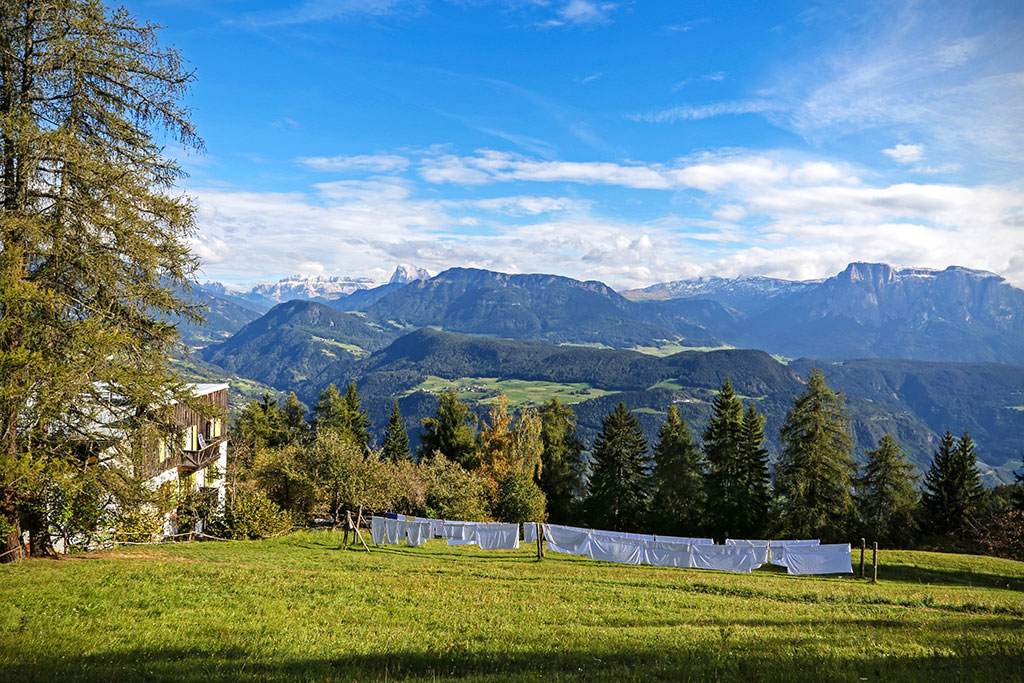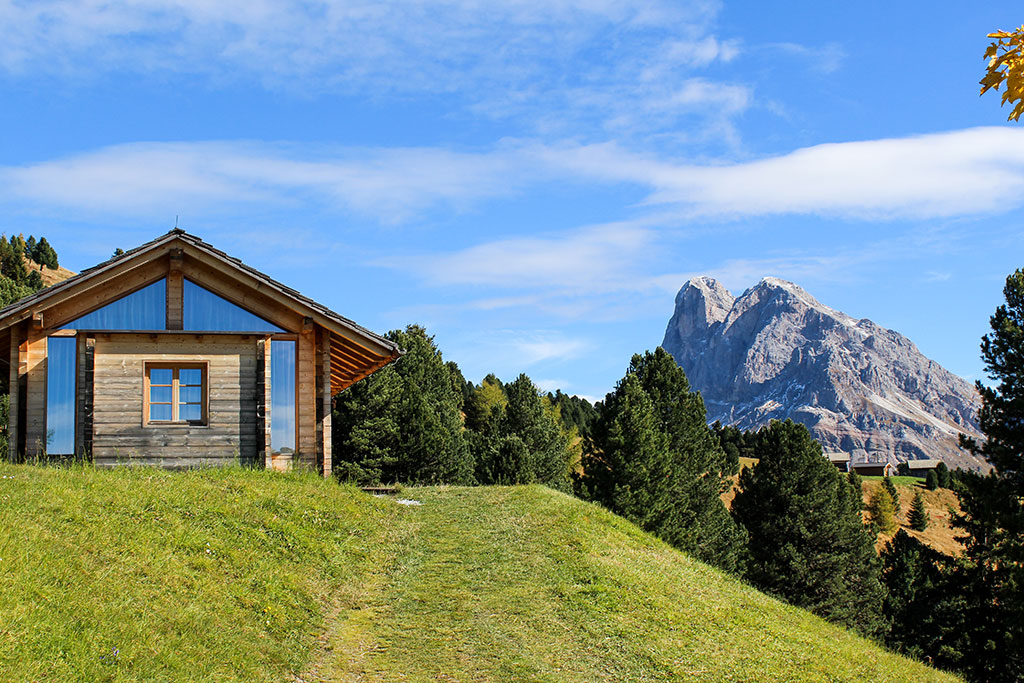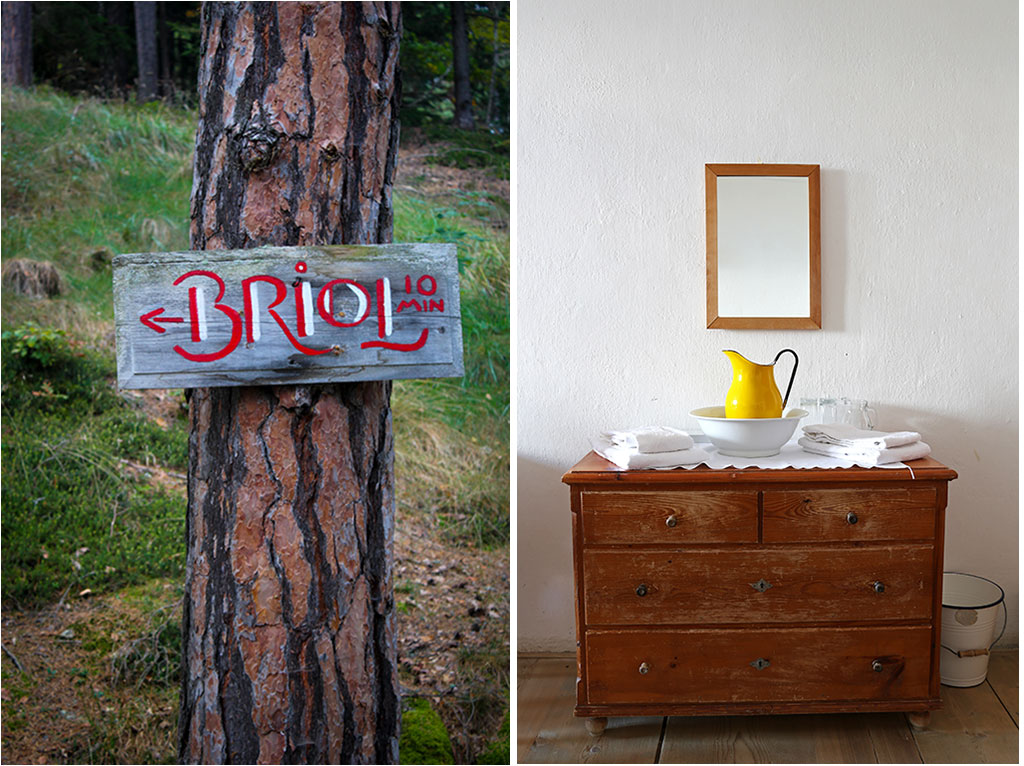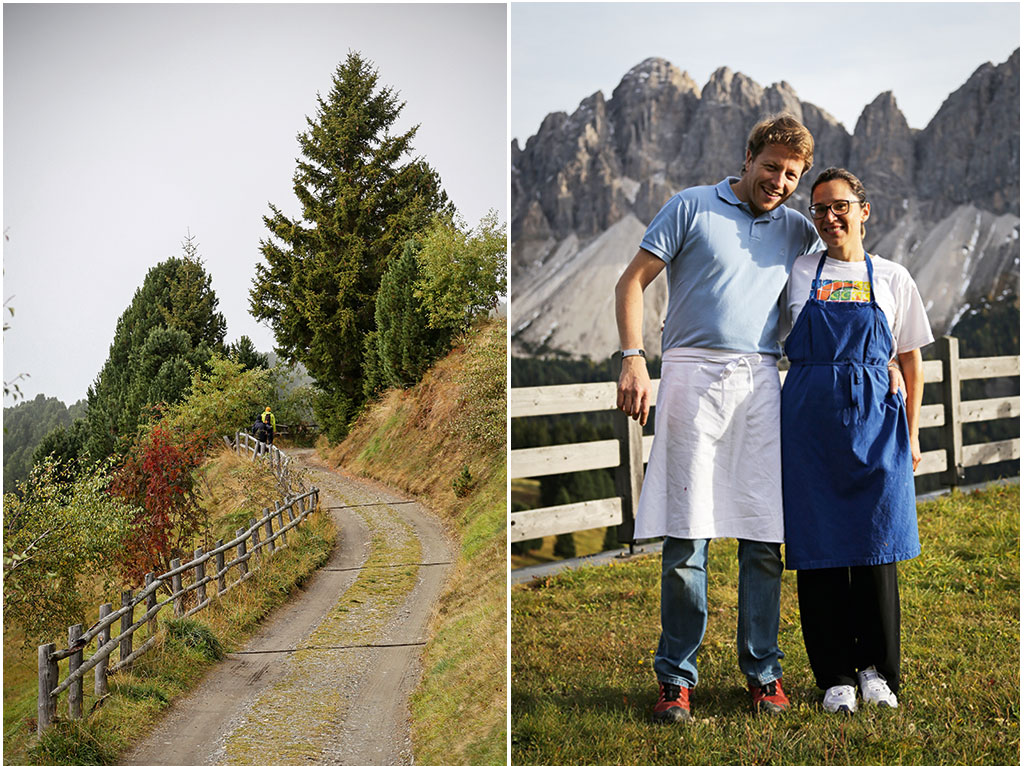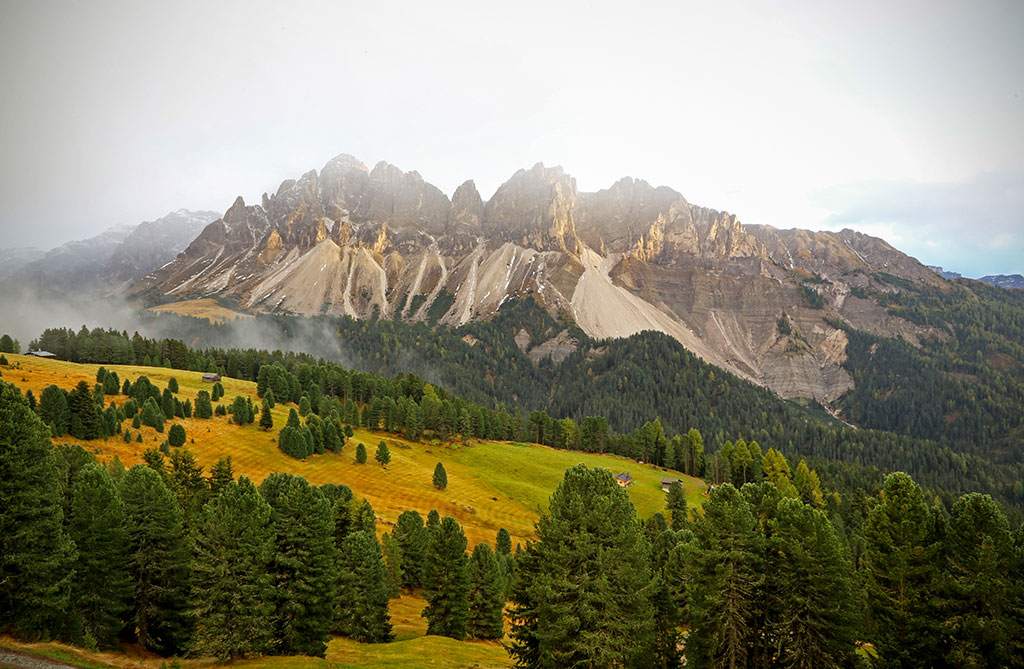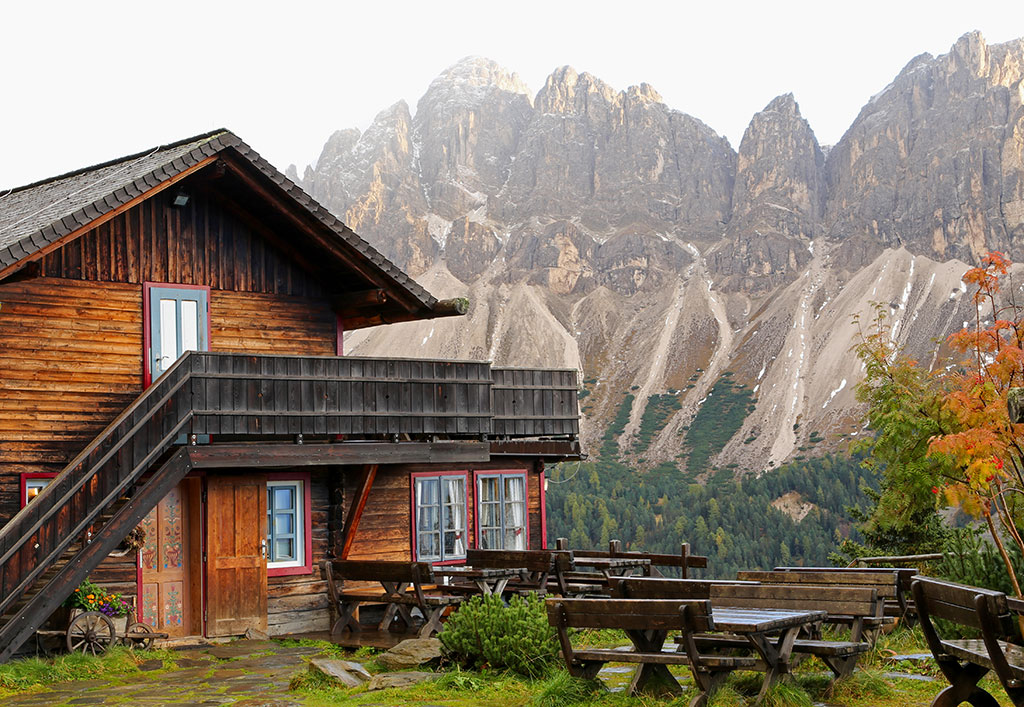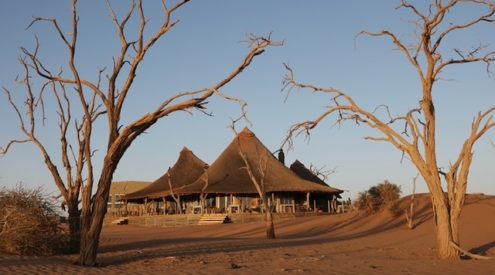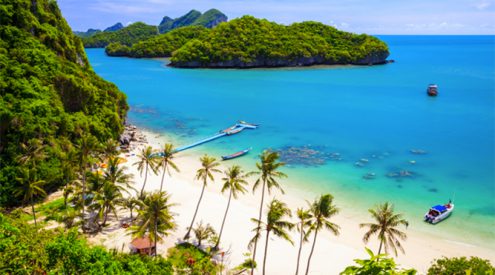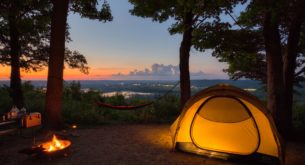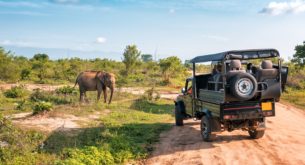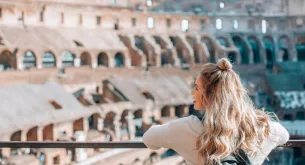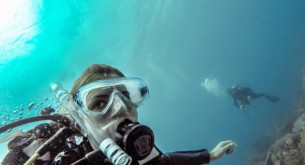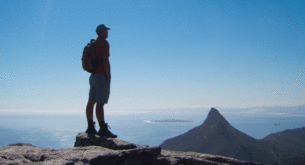The Dolomites in Italy’s South Tyrol are an exquisite and comfortingly safe environment for new and experienced hikers. Our food editor and Brandon de Kock tried it out. Photographs by Brandon de Kock.
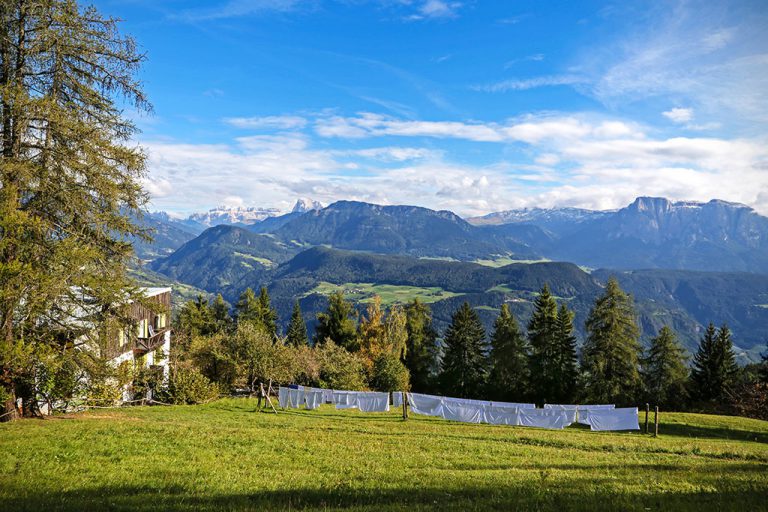
The Dolomites, known as the Pale Mountains, change colour with the time of day and the season.
‘Come,’ said the 60-something blonde Berliner, beckoning me into the hall. ‘I have something to show you – it’s like cowbell but not.’ She was referencing the bell that signals dinner at Pension Briol, one of the unspoken codes all guests (except us) seemed to know about because they’d been coming here for generations. Hesitantly, I followed. ‘It gets cold at night so you will need one of these,’ she said, lifting a wool blanket to reveal a pile of hot-water bottles. ‘You can take two,’ she added with a smile.
I still don’t know their names but she and her brother, also guests, took it upon themselves to initiate us in the ways of Briol. It was our first night in a mountain hut and our first night in South Tyrol, a province in Italy’s northern extremes that’s home to the Dolomite range. On mentioning we were from South Africa, Berliner number two look astonished.
‘Quatsch!’ he exclaimed, which can mean anything from ‘rubbish’ to ‘bullshit’ depending on the context.
‘Is it not beautiful enough?’ Fair point. Why did we travel 2000 kilometres to be immersed in nature?
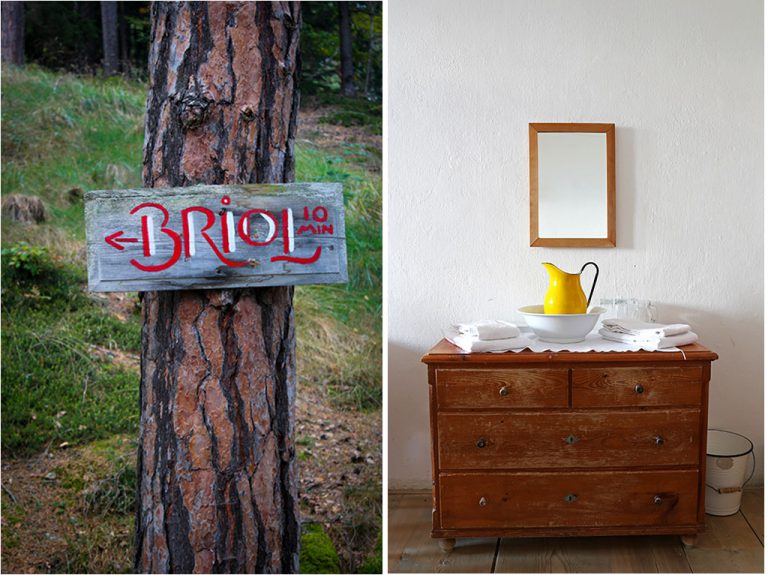
A wooden sign points the way; in our bedroom at Briol.
That’s a question Brandon (The Love of My Life) kept asking too. I’m a keen runner but he’s more au fait with ambling, and I’d persuaded him a few days in the Dolomites was a good idea because it’s a World Heritage Site and there would be vineyards (read Riesling) en route.
I picked our first stop, Pension Briol, based on heritage and design. We were fresh off an urban food-hunting adventure but here’s the rub: hiking is how you access Briol, and we had wheelie suitcases in tow. Did I mention we don’t really hike?
The alternative – Taxi Torggler – appeared to be an octogenarian in an SUV with F1 aspirations. He wore dark glasses, a khaki cap emblazoned with a red-knitted square and ‘taxi’ embroidered in white, and met us at the skew church spire in Barbiano, the town below. For 20 euros he deposited our luggage at the pension while we tackled the relentless incline. Clearly, we wouldn’t be making many return trips. Finally, when the foliage cleared, an alpine nymph in dirndl and Nikes welcomed us with a grappa – things were looking up.
Briol’s spartan rooms, with scrubbed spruce floors and 1920s light switches and lampshades, felt part convent, part grandparents’ holiday home. (Communal bathrooms are a great leveller and I got used to exchanging nods with a woman from Zurich when we met on the landing, clutching our toiletry bags.) Briol’s guests usually open a deck chair in the meadow or head up the Rittner Horn mountain. We opted for a gentle stroll to the waterfall.
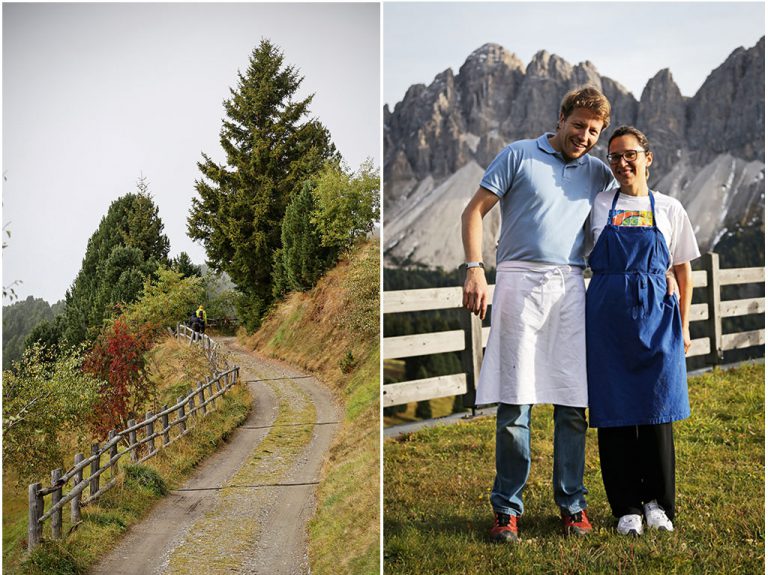
Hikers setting off for the day from Schatzerhutte; Daniel Pescollderungg and his wife Debir are part of the Schatzerhutte team.
Our second location, Schatzerhütte, has a reputation for good food. It lay beyond the vista we could see from our balcony at Briol and higher, at about 2000 metres. I came across it as most people do, by word of mouth.
If finding Briol was a challenge, so was initiating contact with Schatzerhütte. There is a website but no email and bookings are taken by telephone only. Fortunately a kind, English-speaking waitress called Maria answered my call. This time we were collected at no charge from the parking lot by Daniel Pescollderungg, a tall, strawberry-blonde ski instructor wearing a royal-blue apron tied just under his rib cage. His puppyish enthusiasm was engaging and if he’s that happy working the off-season, I’d love to see him at ‘play’ on the slopes.
Daniel welcomed us in English but is fluent in German, Italian, Portuguese and Ladin – South Tyrol’s official language. Historically South Tyrol fell under Austrian rule so when you enter the province, toll officials say ‘Danke’ not ‘Grazie’ and ‘grüß Gott’ is the common greeting. The German clientele, who clearly feel quite at home here, enjoy hiking from hut to hut, said Daniel. But since driving from winery to winery is more Brandon’s speed, he advised us to follow the Italian modus operandi – take the ski lift, admire the view and return for lunch.
We found owner Franz Pernthaler, a Cordon Bleu-trained chef, at his wood-fired oven between jars of pine-cone-infused zirbenschnaps and the wooden mill where he grinds rye flour for sourdough. Franz has bright turquoise eyes, a gentle manner and a sing-song ‘hmmm-mmm’ to let you know he’s listening. Since his uncle handed over Schatzerhütte 35 years ago, he’s built a water turbine and chalets made from zirbel or Swiss stone pine. The aromatic oils in this wood, explained Franz, have a calming effect, lowering heart rate and improving sleep.
In the cosy, pine-panelled dining room parents play spirited card games with their children and friends toast each other, but the atmosphere is most joyous when guests cram in for dinner. It might start with warm slices of Franz’s whole grain loaf spiced with nutmeg, pepper, coriander, anise and caraway, moving onto a haunch of lamb cooked for hours until tender but still pink and rolled in fresh herbs before carving, and finishing with an almond soufflé all puffed up over a bed of berries.
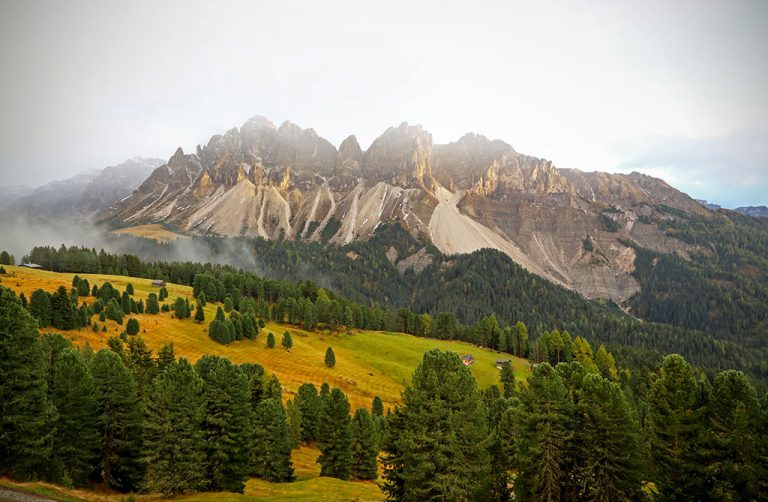
The view that greets you at Schatzerhutte. This is the Aferer Geisler, a group of mountains in the Dolomites.
During the day, Schatzerhütte is a pit stop for passing hikers who lunch al fresco at wooden tables turned grey by sunshine and snow, ordering Franz’s elderflower cordial by the tray. We joined the happy crowd with our books and soaked up the soporific effect of the afternoon rays, staring at a head-on view of the Aferer Geisler. Their festive mood planted a seed. Were we missing out? And by the time they’d gathered their Nordic walking sticks and donned their felt hats, we’d resolved to tackle the four-hour Panoramaweg the following morning.
After breakfast hikers of all levels dispersed on different routes. Young families set out on the flatter paths connecting alpine-lodge refreshment stations and seasoned hikers in neon Lycra and earmuffs embarked on the eight-hour Günther Messner Trail. Franz handed us a worn folded map. Daniel winked and waved us goodbye, promising he’d have a Forst draught waiting for Brandon on our return. We set out alongside a woman, until our paths parted ways and we began our hike, heaving slow, rasping breaths.
In true Teutonic style, the routes are clearly marked with well-maintained red-and-white pointers. This wouldn’t be a repeat of the Kirstenbosch contour path when on asking a passing local for directions he informed us we were already on it. All we had to do was follow the signs, and they appeared with reassuring regularity. I started to relax. With each changing view, we were emboldened to see what lay around the next corner, to go further and, eventually, to reach the top.
The magnitude of the grey rock face, jutting out jagged and square, gave me vertigo. Mountains were stacked layer upon layer, and beyond that, snow-capped peaks as far as the eye could see. On Mount Plose we hit a snow belt and were now warm enough to have shed a few layers. Plose is considered Italy’s best mineral water by some, so we celebrated the good fortune of being at source by scooping up icy handfuls and quenching our thirst with ‘free mountain lollies’, as Brandon nicknamed them. The endorphins had kicked in. As we descended on a slippery slope of pine needles, I vowed to return a more accomplished hiker.
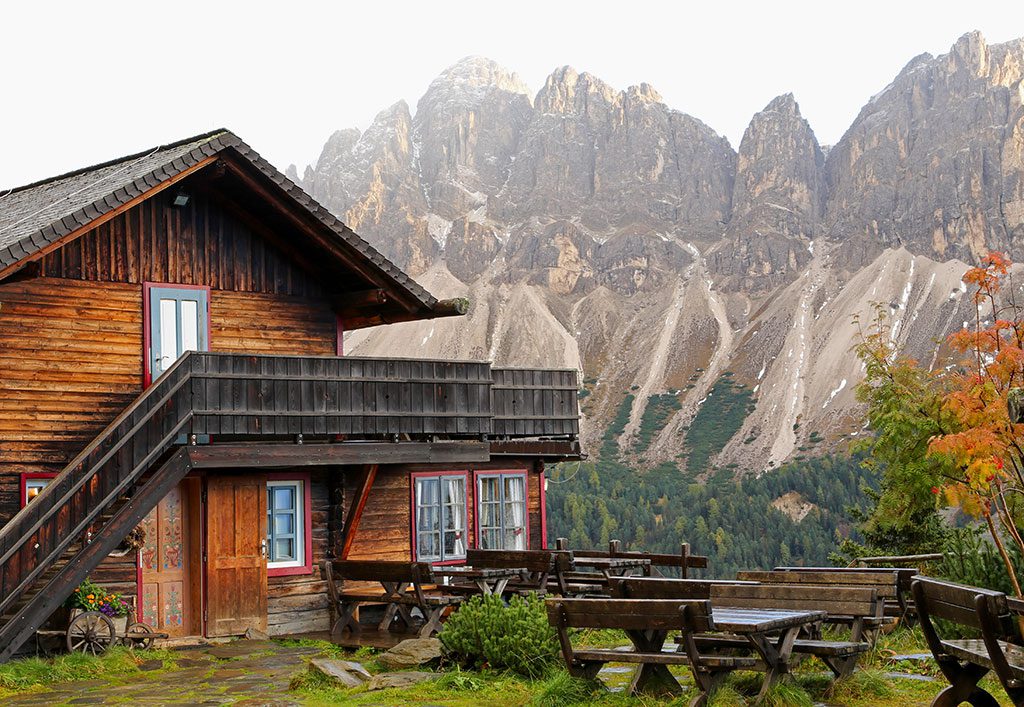
Photo by Brandon De Kock.
By sunset, I’d experienced an exhilarating combination of natural beauty, high altitude, pristine air and Aperol Spritz. And when we took our place at dinner, freshly showered and rosy cheeked, I felt fully entitled to seconds of osso bucco with creamy whole grain polenta from Trentino and – a nod to South Tyrol’s Austrian influence – sauerkraut on the side.
I scanned the room for the woman we’d started out with and was relieved to find her waving at me. For our fellow European travellers, a lone hiker’s worst fate is injury. I now had the answer for my Berliner: travelling here afforded me not just a change of scenery but a real sense of safety, and for South Africans that is true luxury.
That night I climbed under a duvet cover that reminded me of something my mum might pull out if I came to stay. Feeling content and completely at home, I inhaled deeply and was reminded of Franz’s words: zirbel never loses its scent, even after hundreds of years. Drifting off to the distant clanging of cowbells from the valley below, my mind wandered. I remembered an inscription we’d seen along our path and willed myself to remember it long after I was back home. ‘I wish you time, not time for haste and running, but time so you may feel at peace.’
Plan your trip:
Cost of trip
The trip cost R15000 for two excluding flights.
Getting there
We flew with Emirates to Milan (R8500 return) for our food adventure, which took us on a road trip to Bologna, and then we tacked on six nights in South Tyrol for a bit of R&R. To get there, we hired a car from Sunny Cars for about R500 per day and drove to Barbiano (3.5 hours). emirates.com, sunnycars.com
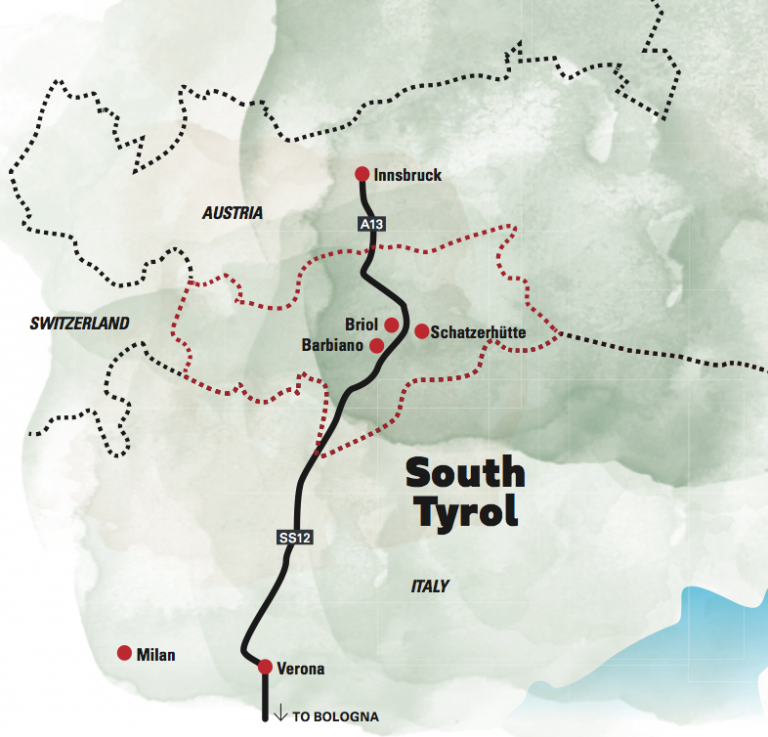
When to go
The autumn months of September and October when the skies are mostly clear and the air is cool.
Need to know
South Africans need a Schengen visa to enter Italy (R915 for adults, R534 for minors). A working knowledge of German or Italian is advisable. Having our own transport made it easier – we could lock our excess luggage in the boot when we had to access more remote huts on foot. Hiking boots are preferable but on the advice of Getaway’s Deputy Editor, Tyson Jopson, I wore my running shoes with hiking socks for support, which worked well for a first foray into hiking. Some places are only open for the summer or winter season. At both places we stayed, cell-phone reception was limited and there was no Wi-Fi. For more information on South Tyrol, transport and accommodation, see suedtirol.info/en
Stay here
Pension Briol has been preserved and maintained by the women of one family since it was built in 1928. We stayed in Haupthaus (the original main house) where there is no heating or curtains in the rooms and bathrooms are shared. Down the hill are House Settari apartments, which have kitchenettes, ensuite bathrooms and heating. Hike up or call Taxi Torggler (about R300 one way; +390471650004. Pension Briol opens from 27 April to 22 October 2017. From R1200 per person including a Continental breakfast buffet, lunch salad buffet and three- course dinner (excluding wine and drinks). briol.it
Schatzerhütte was built in 1926 by owner Franz Pernthaler’s grandfather. We took a spacious private chalet that had heating, a shower and toilet. There was also a loft bed (perfect for children). Hike up or arrange to be collected. From R1018 per person for two sharing including a Continental breakfast and three-course dinner (excluding wine and drinks). schatzerhuette.com
This story first appeared in the March 2017 issue of Getaway magazine.
Our March issue features a self-catering trip to the Seychelles that you can afford, a secret Karoo retreat, learning to fly-fish in Rhodes and a Joburg road trip for beer lovers.
